Expert: Democrats are still not talking enough about opioids
Health care and the economy have been the two main talking points of a majority of the Democratic presidential candidates as they embark on their campaigns across the country.
But the conversation has been lacking in a specific topic, according to one expert.
“I’m quite surprised that through the current debate cycle on the Democratic side, this issue hasn’t come up as it is,” Dr. Anand Parekh, the chief medical advisor at the Bipartisan Policy Center, told Yahoo Finance. “My hypothesis is that on the health side, the conversations remain so dominated by financing — this issue of financing health insurance coverage, and the Medicare for all debates. And on the economic side, it’s been largely in the context of what are the new jobs in the future and how you deal with job displacement.”
New data shows that the U.S. opioid crisis is just as much a concern among rural America as economic concerns. And although rates of overdose deaths are higher in urban areas than in rural areas, there are more deaths involving natural and synthetic opioids in rural areas.
In a survey conducted by the Journal of the American Medical Association (JAMA), “when asked to identify the overall biggest problem facing their local community … 25% of rural adults identified opioid or other drug addiction or abuse, and 21% of rural adults reported economic concerns, including availability of jobs, poverty, businesses closing, cost of living, and low wages.”
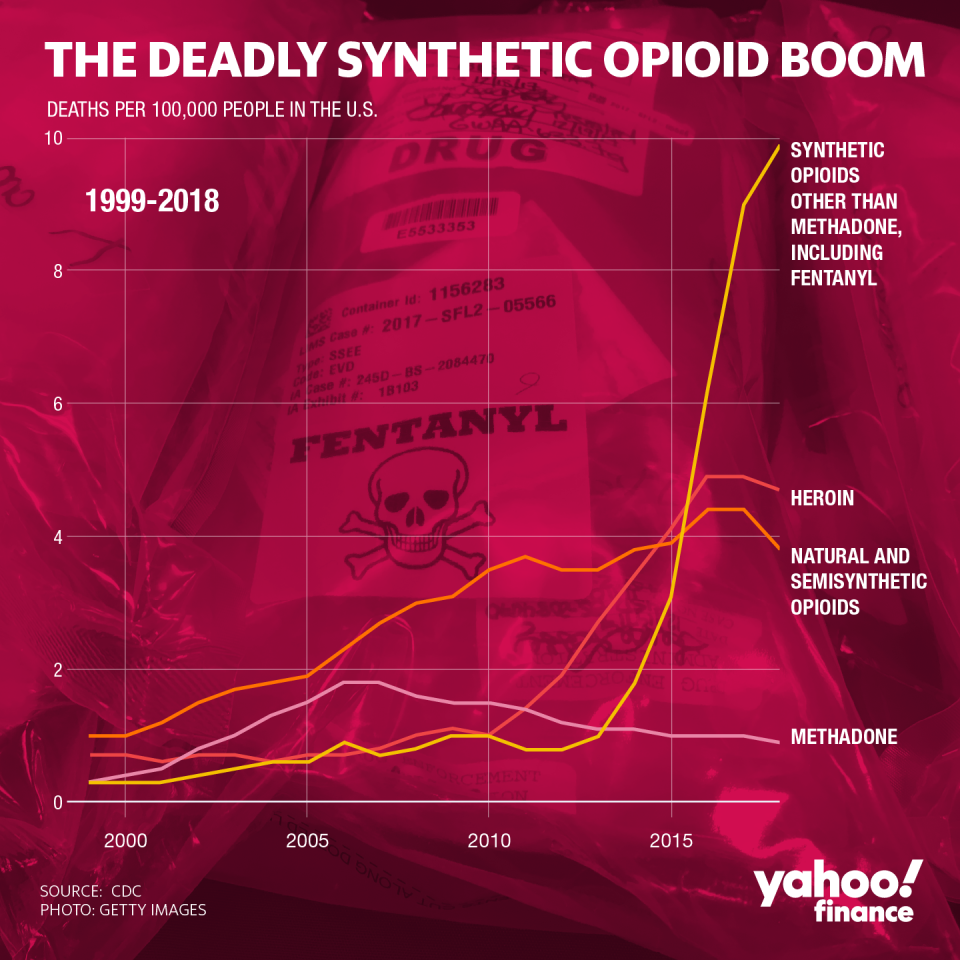
‘We will not quit until we have beaten the opioid epidemic’
Drug overdose deaths declined in 2018, according to the Centers for Disease Control (CDC), although deaths from synthetic opioids like fentanyl saw an increase.
President Trump, who has made combatting the U.S. opioid crisis a key mission of his presidency, touched upon the historic decline in deaths during his recent State of the Union address.
“Drug overdose deaths declined for the first time in nearly 30 years,” he said. “We will not quit until we have beaten the opioid epidemic once and for all.”
There were 67,367 drug overdose deaths in 2018, which is a 4.1% decrease from 2017, according to CDC data. Among those deaths, 46,802 were from opioids, including prescription opioids, heroin, and synthetic opioids like fentanyl.
During the Democratic presidential debates, the topic of the U.S. opioid crisis has largely been overshadowed by talks of impeachment, Medicare for all, and other hot button issues.
In the most recent debate in New Hampshire, candidates were asked a question about the larger issue of drug overdose deaths. Only former Vice President Joe Biden, Sen. Amy Klobuchar (D-MN), tech entrepreneur Andrew Yang, and former South Bend Mayor Pete Buttigieg provided answers on the topic before the discussion moved to America’s gun culture.
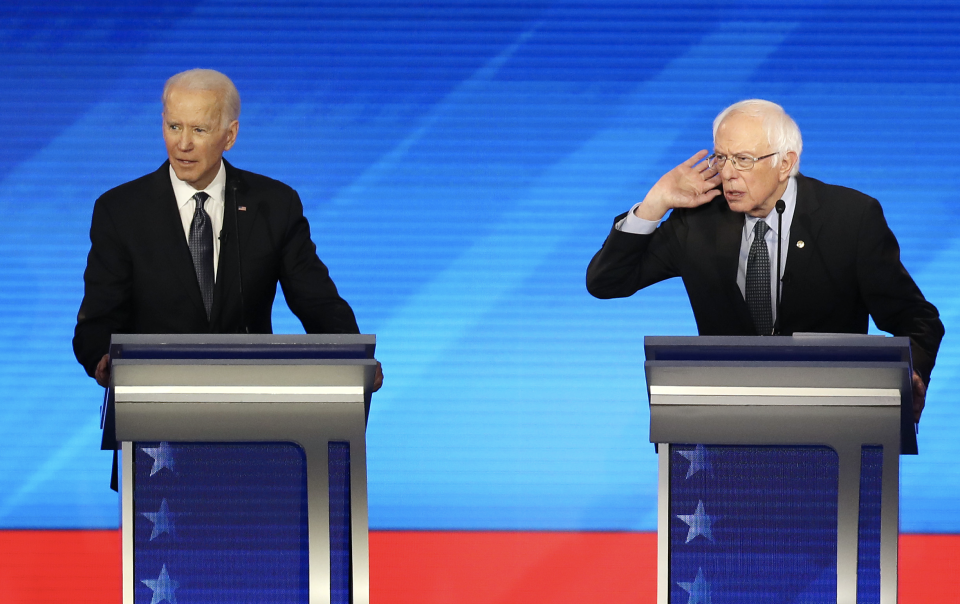
‘I can’t think of any other issue that ties in both health and the economy...’
Back in October, then-candidate Sen. Kamala Harris (D-CA) touched on the opioid crisis during a debate, describing big pharma as “high-level dope dealers” in regards to the roles that some of the companies played in fueling the crisis. Sens. Bernie Sanders (I-VT) and Klobuchar also chimed in, along with Yang.
Among the top 10 states with the highest amount of drug overdose deaths, six of them voted Democrat in the 2016 presidential election.
Parekh doesn’t understand why it’s not being talked about more, but does think that it could become more of a “top-tier issue” going forward.
“I can’t think of any other issue that ties in both health and the economy in both rural America and urban America like the opioid epidemic,” he said. “I suspect as we move into 2020 and particularly get into the general election, particularly when you focus on the Midwest rural areas, I think more and more people are going to connect this.”
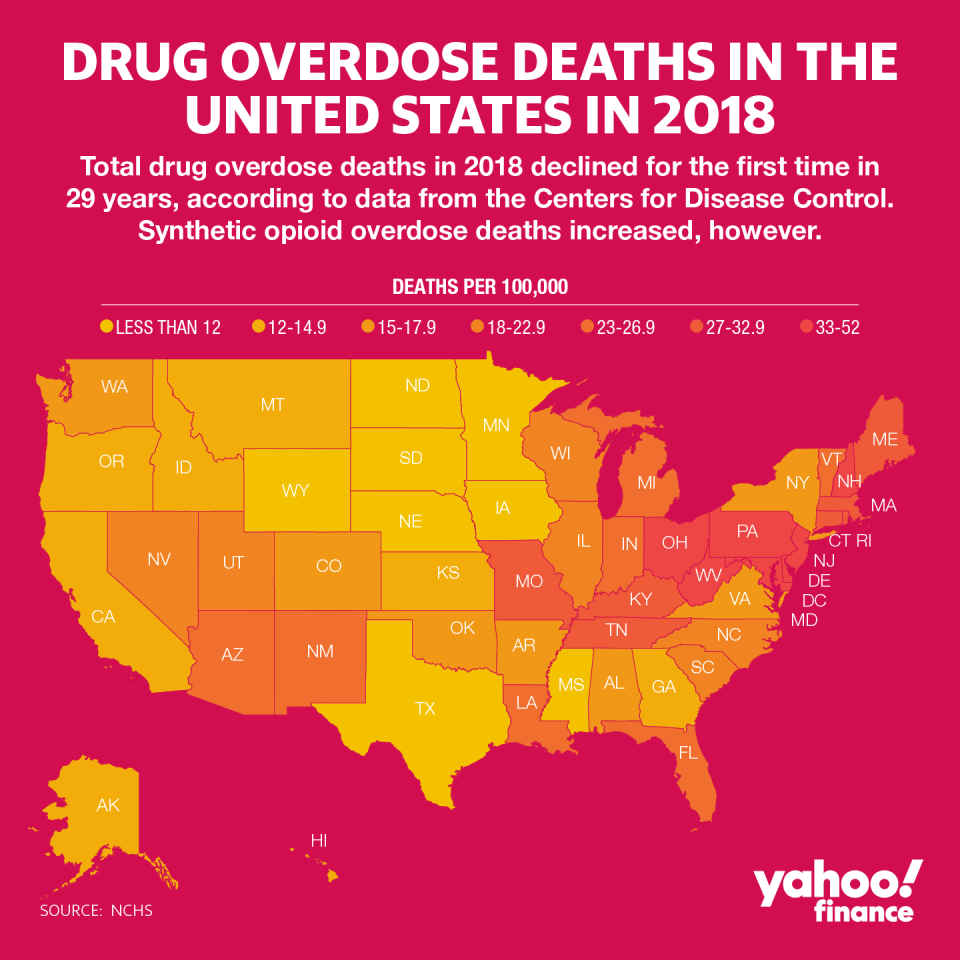
The catch-22 of the opioid crisis
The opioid crisis has become a uniquely American issue: Data from Deutsche Bank has indicated that opioid-related deaths per million inhabitants has drastically increased in the U.S. compared to other Organization for Economic Cooperation and Development (OECD) countries.
And there is evidence to support Parekh’s claim that the opioid crisis is a major economic issue. An analysis from the Society of Actuaries found that the estimated cost to the U.S. economy from non-medical use of opioids would be more than $819 billion from 2015 through 2019. For 2019 alone, the projected cost is around $188 billion.
And there is a catch-22 when it comes to the connection between the opioid crisis and the economy.
“On one hand, poor economics leads to unemployment, [which] leads to despair, depression, and perhaps comorbidity like chronic pain, abuse of opioids, and then opioid use disorder,” Parekh said. “The flip side could be people who are abusing opioids, who have opioid use disorder, have difficulty maintaining employment which leads to unemployment and poor economics.”
In the construction industry, for example, opioid abuse is a relatively acute issue. That industry has been facing a labor shortage since the Great Recession, and opioid addiction is attributed as one of the leading factors. And in 2016, there was a major correlation between opioid prescriptions and lack of labor market participation, particularly in states like West Virginia, Mississippi, Alabama, and Arkansas.
“In 2016, more than 1.5 million people living in rural areas misused opioids, including prescription pain relievers and heroin, and nearly 5,000 people in rural areas died of opioid overdose — the largest annual opioid-related death toll in U.S. history,” according to recent research published in The Journal of the American Medical Association (JAMA)
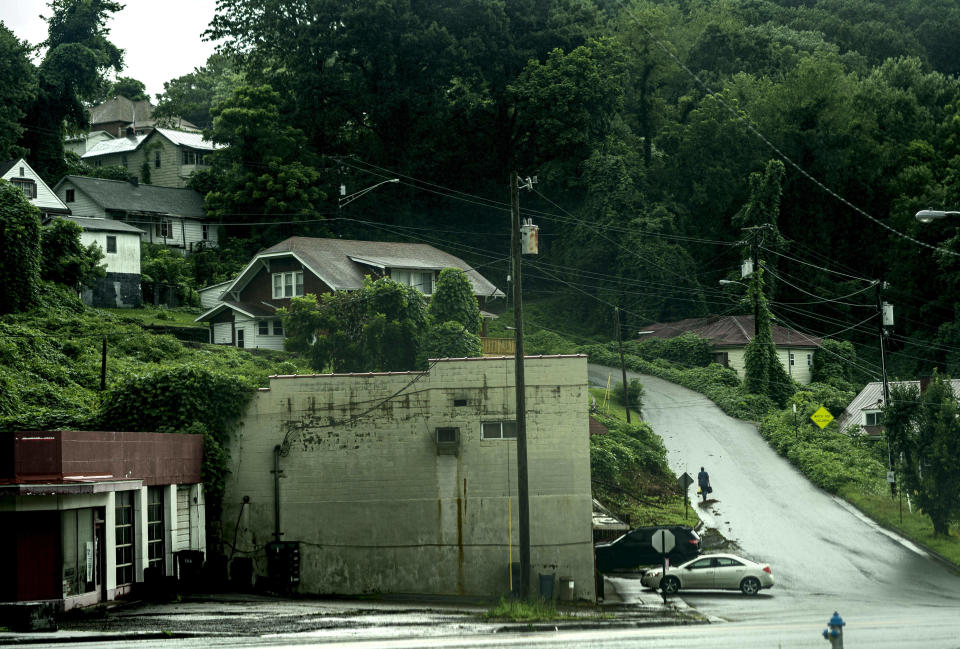
‘This is a huge rise in public concern’
Harvard University Research Associate Dr. Mary Gorski, a coauthor of the research, noted that although she knew rural America had been facing economic struggles, she didn’t realize opioids have become an “equally serious” threat.
“This is a huge rise in public concern that has coincided with the rapidly evolving opioid epidemic, especially in places like rural Appalachia,” Gorski told Yahoo Finance. “We were also surprised that a majority of rural Americans are open to outside help to solve major problems facing their communities, including help from government, since rural communities have traditionally been characterized as self-reliant.”
And it’s not just taking its toll on the economy — opioids are also having a major impact on the U.S. health care system. According to the JAMA study, “nearly one-third of the opioid crisis cost is attributed to health care spending related to opioids. This includes treatment for those with substance use issues, infants born with neonatal abstinence syndrome or neonatal withdrawal syndrome, and for family members of those with opioid use disorder.”
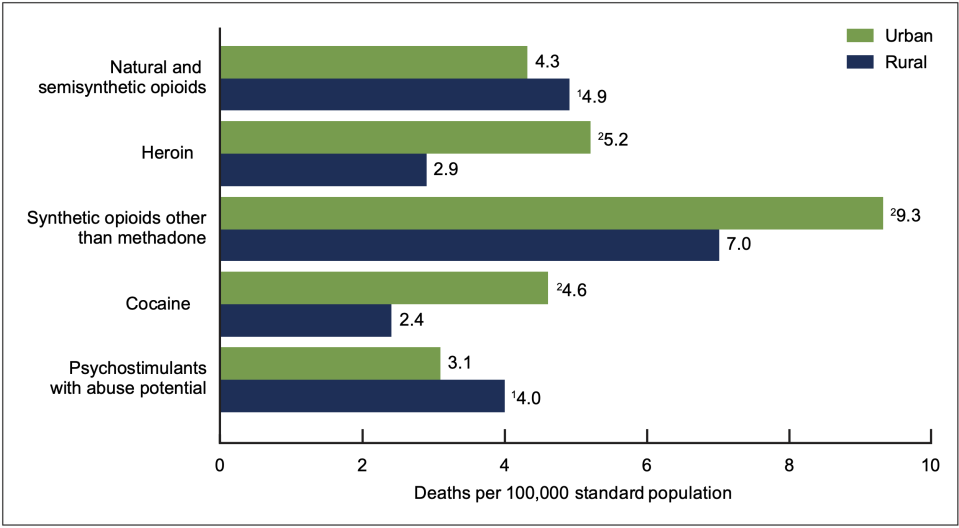
The survey respondents also recognized the health care connection. When they were asked about the most urgent health issue plaguing their community, 23% of the rural adults said it was opioid or other drug addiction or abuse. Overall, 42% said opioid/other drug addiction was the biggest problem in their community. Almost half of all respondents said they personally knew someone struggling with addiction.
“We found that rural adults expressed serious concerns about opioid abuse as a major threat to their local communities, corresponding to a rapidly evolving epidemic with a historic death toll in rural areas,” the JAMA report stated. “These levels of public concern are potentially important for influencing the views of policy markets about appropriate actions and spending.”
Adriana is an associate editor for Yahoo Finance. She can be reached at [email protected]. Follow her on Twitter @adrianambells.
READ MORE:
The U.S. opioid crisis will cost $800 billion over last five years, study says
'Just a piece': The U.S. opioid epidemic is costing a fortune in lost tax revenue
Read the latest financial and business news from Yahoo Finance
Follow Yahoo Finance on Twitter, Facebook, Instagram, Flipboard, SmartNews, LinkedIn, YouTube, and reddit.
